Normal May Not Be So Normal
I want to preface this post by saying that our organization is in the business of helping our customers navigate processes and technology, both online and otherwise, to better manage their organizations. That may involve moving to the cloud to better support their customers and employees. As such, I’m looking at things from a business technology standpoint.
By now we’re probably all tired of the latest batch of jargon that surfaced because of the pandemic. Phrases like “the new normal” are starting to grate on our nerves. We just want the madness to stop so we can get back to some semblance of what normal used to be. As much as we may dislike those phrases, it’s hard to argue that things won’t go back to the way they were. There’s nothing like a crisis to drive innovation and adoption of technology. “Necessity is the mother of invention”, to borrow another cliched phrase.
Trends Prior to COVID
Even before COVID reared its head there was an undeniable migration to the cloud. Business leaders were becoming more comfortable with having their systems and data hosted elsewhere as security concerns were addressed. Increasingly businesses saw the value of offloading the infrastructure maintenance burden to cloud application providers or private cloud hosting providers.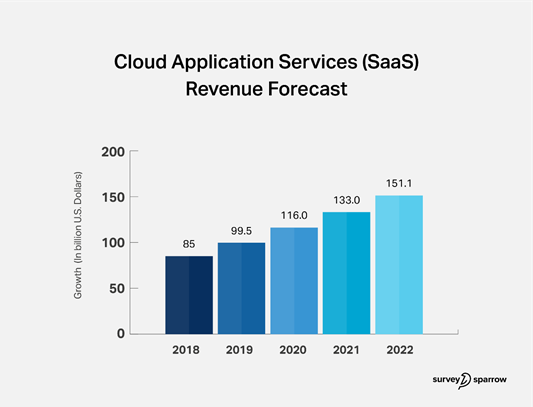
When you evaluate the total cost of ownership over the life of an internal server with required operating system and database updates needed and other maintenance costs, it makes economic sense over about a 5-year comparison of costs. Factor into that equation a subscription cost that can be expensed as opposed to a large up font capital cost, cloud and SaaS become a more attractive offering to organizations that want to preserve their working capital for other projects. Or perhaps the funds just aren’t there for large capital purchases.
When we add to the equation the ability for staff to work remotely, because most of these SaaS offerings may be accessed through a web browser, you create an even more compelling argument. Even more so because the pandemic.
These points address internal facing aspects of moving to the cloud. The other side of the conversation is how to deal with customers. Especially if you’re in the business of delivering products or services to consumers or business to business.
Taking your business online to serve your customers has also been experiencing growth in recent years. The numbers below were reported in June 2019, before the pandemic.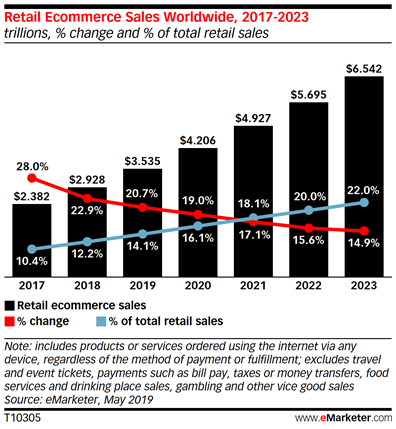
According to Frost and Sullivan, B2B e-commerce sales were forecasted to hit $6.6 trillion by 2020, leaving B2C behind. Again, these forecasts were made before the effects of the pandemic were realized.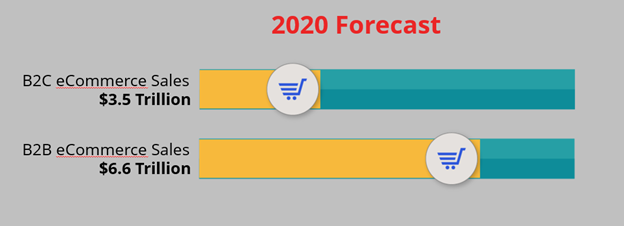
And then everything changed.
What Are We Seeing Now?
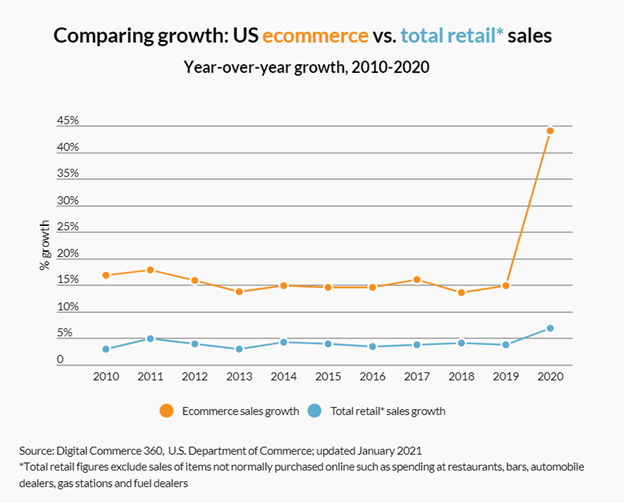 “Well that didn’t go as planned” may be the understatement of the year. Things changed dramatically and quickly starting in early 2020. All the forecasts went out the window and analysts scrambled to come up with new models. And the consensus seems to be that the trend will continue but perhaps at not such a dramatic rate.
“Well that didn’t go as planned” may be the understatement of the year. Things changed dramatically and quickly starting in early 2020. All the forecasts went out the window and analysts scrambled to come up with new models. And the consensus seems to be that the trend will continue but perhaps at not such a dramatic rate.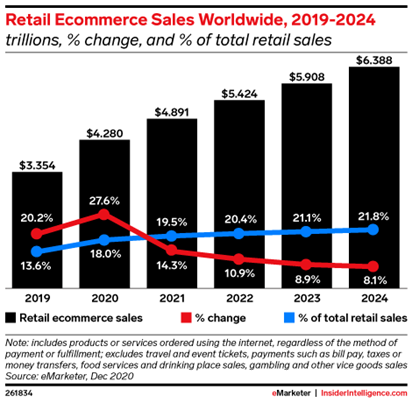
As the chart above illustrates, the percentage spent online continues to rise at a greater rate than earlier forecasts predicted, signaling a change in buyer behavior. And the effects may be even more pronounced in the B2B environment, although it’s too soon to tell exactly how much.
What You Can Do
There are 2 distinct areas we have discussed that may have an impact on your organization. One is your internal business management, which is inward facing. The other is outward facing or providing your customers with more convenient ways to engage with you. Arguably you may have more time to address the internal side of things, but the outward, customer facing side is more urgent. Customer expectations have been changing and that has only accelerated because of the pandemic.
Getting your business online is more important than ever since buyers have demonstrated that they will change suppliers to gain that convenience.
Whether you sell B2C or B2B or both will have an impact on the platform you choose to deploy. Depending on the volume you expect from your online presence, you may need to consider having your web presence integrated to your back-office accounting or ERP system. Having 2 disparate systems can create a maintenance burden that can add administrative overhead to your venture, impacting profit. Integration to your back-office will allow you to scale without adding overhead.
In general, B2C is much easier to manage from a back-office integration perspective. There is one price and everyone provides payment to check out. B2B has many more nuances that need to be addressed to provide the best buying experience for your repeat customers. Below are some things you need to consider.
What You need to Know
In a B2B environment there are many nuances that don’t come into play for B2C. For example, you may have negotiated pricing for certain customers, or you may provide volume discounts, or you may have contract pricing. Customers may also have payment terms so you don’t require them to provide payment details to place orders. You may have special shipping arrangements where you use their designated carrier and their account with that carrier.
That’s just a few of the possible idiosyncrasies that make a B2B web store unique. And they may be different for ever customer or group of customers. Trying to manage that in a disconnected web store can be daunting. And failure to do so can result in a poor customer experience and costly mistakes in order processing.
Often when we think about integration, we think about getting orders into our fulfillment systems. That’s the easiest and less labor-intensive part of the equation. Getting your product details, pricing, customer details, tax compliance, and many other details from your back-office to your web store is far more work and more crucial to provide the best customer experience. Not to mention preventing potentially costly mistakes.
When a B2B customer visits your web store, they should be presented with their pricing for the products they are eligible to purchase with their payment terms honored.
We happen to be the publisher of an eCommerce platform called Webtelligence that is deeply integrated Sage 300, an ERP system designed for small to medium sized businesses. Sage 300 remains the system of record and all business logic and customer specific settings are respected on the web store. There are similar systems available for other ERPs.
Having dealt with many customers and prospective customers over the years, we have witnessed many stories of attempted integrations between different web store platforms and back-office systems. Many of these publishers and integration partners will claim, and believe, that they can provide an integrated system. And they can, to a degree. But it comes at a cost that is usually significant, and they often can’t integrate to the level that we have discussed here.
If we can offer any advice, it’s this. Do your homework. Understand the experience you want for your customers and what that means from an integration perspective. What data from your back-office system needs to be available to your web store and to your customers? Be sure you understand and can communicate that to the platform provider and get a true account of what that will cost, how long it will take, and what effort will be required by you to maintain it.
Providing online buying options for your customers is becoming a must. Customers expect it. By ensuring you have a properly integrated system will mean you can reap the benefits without eroding profits through added overhead due to ongoing maintenance issues.
North49 can help you explore this for organizations that use Sage 300. Book some time on my calendar if you’d like to discuss your situation.
